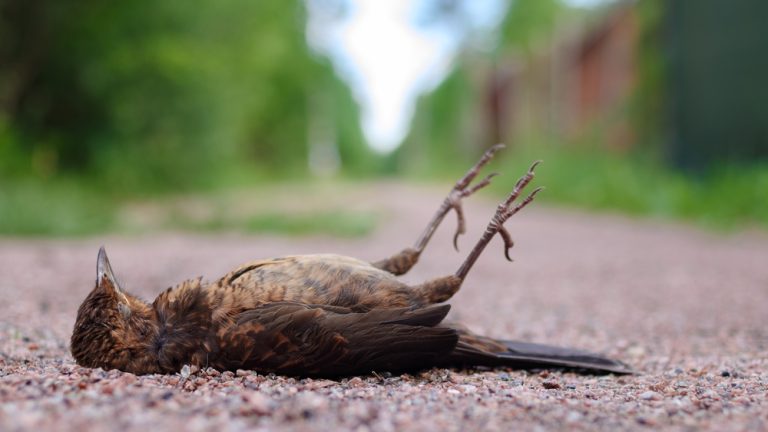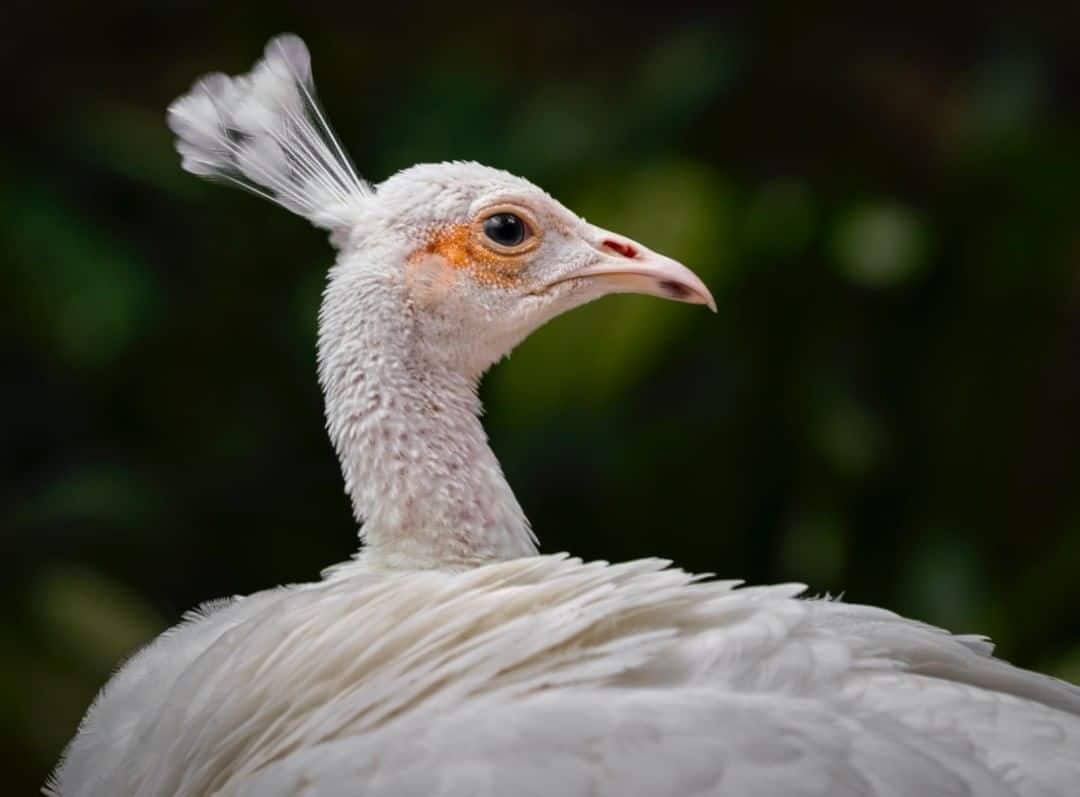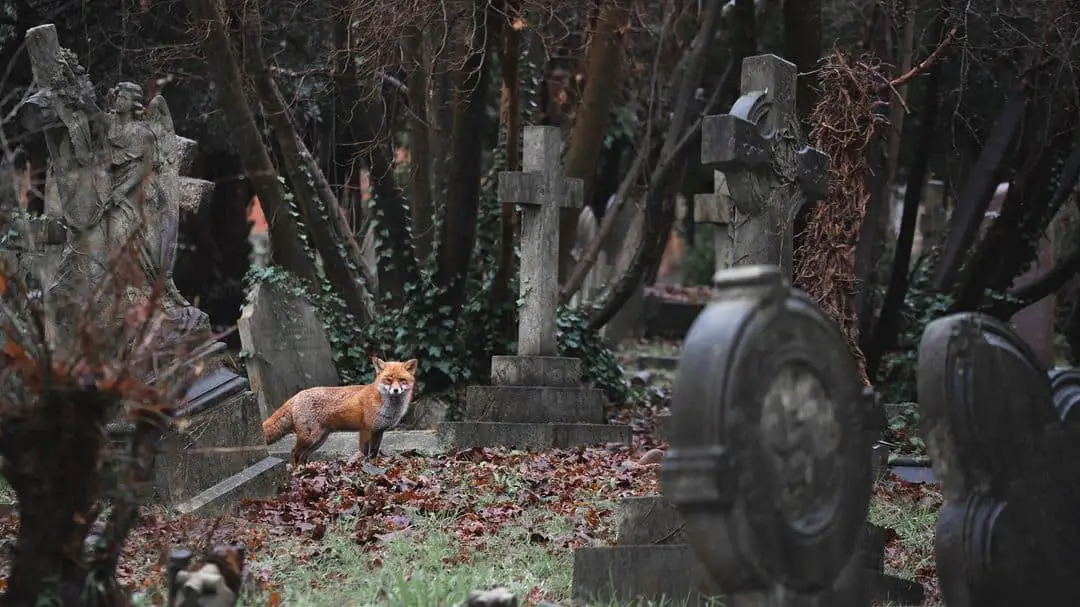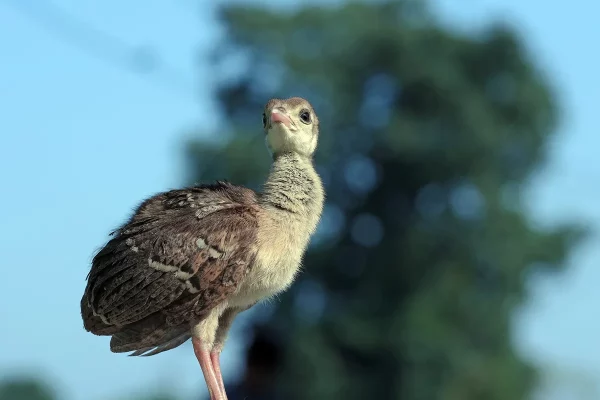Occasionally, we see birds that appear to be dead as they lie on the ground. In some cases, such as when a bird flies into windows and strikes the ground, we can tell why they are there. At times, we have no idea what transpired with them.
It’s critical to comprehend the circumstances surrounding a bird in this predicament. If the bird is dead, you should get rid of the carcass to avoid any animal carrion eaters or unpleasant smells.
In the event that they are shocked, the bird will experience a brief period of immobility. You don’t need to do anything; the bird will heal on its own. If it can be moved securely, relocate it to a place where it won’t be as vulnerable to predators.
I’ll provide some advice on how to determine if a bird is alive or dead in this post based on its appearance and behavior. We’ll also go over what to do in each situation and how to keep both you and the birds as safe as we can.
Seek Out Life Signs
You can determine if a bird is alive when you find it resting on the ground. Getting gloves should be your first priority. The bird may be sick, therefore you should never handle it without wearing gloves. Like any other wild animal, birds are susceptible to illness.
For instance, it might be harmful to handle a bird that has the West Nile virus. Despite maintaining that there is no proof that touching a bird might expose you to the virus, the CDC nonetheless advises wearing protective gear.
Editor’s note: Wear two pairs of gloves—one cotton and one latex—for optimal safety. Even if it comes into contact with bodily fluids, the bird’s feathers or skin will still shield you from any bacteria.
Take a gentle hold of the bird in your hand and examine it more closely. Here, you’re searching for four crucial indicators:
The faintness of bird breath may lead you to miss it at first. The easiest way to see the bird’s stomach is to lift one of the wings. The bird is alive, only stunned, if it is moving.
Look for any obvious wounds on the bird’s head or body. Common injuries include head trauma, shattered breastbones, and fractured clavicles. There isn’t much you can do about any of them.
But contact a veterinarian if the bird is hurt. If not, relocate the bird to a secure location and keep it there until it heals on its own.
You should prepare for the worst if they don’t seem to be breathing or moving at all, particularly if their feathers don’t appear smooth rather than ruffled like those of shocked birds.
Does the bird’s heart continue to beat?
But hold on for now. It’s possible that they are still alive. Take a stethoscope and tune in to the bird’s cardiac rhythm. The heart is located above and close to where our own heart would be on the left side of their chest.
Even with a stethoscope, some birds’ heartbeats are hardly audible. But presume the bird is alive as long as it remains present.
Examine the bird’s legs and feet. The bird is probably dead if it is stiff, which means that when you touch them, there is no movement inside or out.
About ten minutes should pass during the entire process. After a minute with no heartbeat or breathing, don’t assume the bird is dead.
How to Handle a Motionless Bird
Having learned how to determine if a bird is dead or alive, let’s examine our options for what to do in each situation. Our goal is to make sure that you and the bird are as safe as possible. additionally for anybody else who might be in the vicinity, particularly kids.
How to Handle a Dead Bird
Get rid of the bird properly if you are positive it is dead. You can wrap them in plastic bags and discard them in any dumpster or trash can. Alternatively, if they are small enough, throw them into sewer drains where their bodies will be consumed by other wild animals when they go on a hunt for food in the future.
Alternatively, you could relocate it to a location where other animals can safely consume its corpse, like a farm or garden. However, be sure to wear gloves and avoid touching the bird with your bare hands after handling it carelessly. Additionally, ensure that children won’t play in the vicinity. Youngsters tend to touch everything they come across, so the last thing we want is for them to become ill from handling a dead bird.
Editor’s note: Report any birds you see that you have never seen before or that are uncommon in your area to the animal control agency in your area. The website of South Carolina’s Department of Health and Environmental Control, for instance, can be found here. Basically, you should notify the authorities if you think it’s strange that there is a dead bird of that kind in the area.
How to Handle a Stunned Bird
Here’s how to make sure the bird recovers without any problems if you are positive that it is alive but has just been stunned.
Make sure there are no potentially hazardous objects nearby first. For instance, move them away from those situations as soon as possible if it’s on an overhead wire and a car is approaching, or even if it’s just about to arrive. Predators or kids playing in the vicinity could pose a threat to a stunned bird.
After that, lead them to a location free of nearby cars and other hazards. Place them on the ground in a secure area, away from potential predators and people. The ideal location is one with grass so they can land on something softer rather than harsh concrete that could hurt their feet.
You can put them in a box or container and keep them away from children and pets if you want to bring them along just to be sure. Just make sure the box is large enough for them to spread their wings when they wake up and that air is getting into it. You may reintroduce them to the wild after they awaken.
Leave them there when you’ve located a suitable area, preferably somewhere they won’t be harmed by anyone or anything. Within fifteen minutes, they should wake up, but if they don’t, you should prepare for the worst and call the veterinarian for more instructions.
Take note: Do not feed or medicate the bird. As soon as the bird is able to take flight again, it will resume its food-gathering activities. Regarding medications, humans and birds are sufficiently dissimilar that what cures us also damages them. Don’t, please.
Common Reasons for Bird Deaths and Stuns
Stunting of birds is primarily caused by collisions with windows. You already know what would happen if you were relaxing and heard a sudden “TUD” on your window while a bird was laying nearby. The bird may be killed or dazed, depending on the force of the strike. To find out the bird’s state, follow the instructions we provided previously in the article.
Power lines are an additional factor. This occurs as a result of the bird trying to fly around the wire but colliding with them and is electrocuted. We often see birds perching on electricity wires, so it’s strange. However, it still occurs, so if you encounter one of them, use caution.
In addition to crashes into windows and electricity wires, there are additional reasons, such as poisonings. A drunk bird loses all control of its body and flight pattern. They often smash through windows while they’re drunk.
The last two primary causes are vehicles and cats—the latter for accidentally hitting birds when they come in the way, and the former for purposeful bird slaughter. This is often the case when a dead bird is sprayed onto the pavement. After being struck by a vehicle, they were ran over. Regretfully, but what are your options?
Final Thoughts
Generally speaking, it’s not too hard to tell whether a bird is dazed or dead. The main problem is that there are a lot of individuals who don’t give a damn and leave them lying since it’s not their responsibility. However, that is untrue. Scavengers will be drawn to a decaying bird corpse, which might endanger nearby youngsters who are playing.
You might aid in the bird’s recuperation after you’ve established that it is alive and only stunned. Wait until the bird wakes up on its own terms, provided it has a comfortable area to roost. Inform your veterinarian as soon as can about what transpired if, after 15 minutes, they still don’t. They’ll be aware of the optimal course of action to guarantee a full recovery without complications later on.
If you come across a dead bird, you have two options: if the species is widespread in the region, you may dispose of the corpse yourself; if it’s unusual in your area, you can call the local authorities to dispose of the bird correctly. This last item is crucial since certain birds are protected and their corpses cannot be thrown out with ordinary trash.
Don’t touch it with bare hands in the meantime, and stay away from any open wounds, if any.
Before discarding the corpse, try to capture some photos of it so that scientists might have a better understanding of the bird.
You’ll know for sure what occurred if you examine the bird’s respiration, heart rate, leg stiffness, and obvious injuries.





![Beautiful Birds with Crazy Hair [images + IDs]](https://birdsology.com/wp-content/uploads/2023/02/18016157706_72101b31ff_b-600x400.jpg)

I was curious if you ever considered changing the layout of your site? Its very well written; I love what youve got to say. But maybe you could a little more in the way of content so people could connect with it better. Youve got an awful lot of text for only having 1 or two images. Maybe you could space it out better?